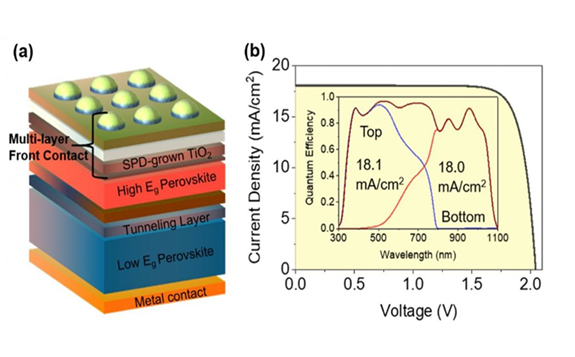Researchers from Kanazawa University in Japan have developed a perovskite solar cell based on a titanium oxide (TiO2) compact electron transport layer (ETL), which they claim is the most efficient PV device of its kind to be produced at the research level to date.

They used a spray pyrolysis deposition (SPD) technique, which is generally used for temperature decomposition of organic material in the absence of oxygen. This process is known to provide excellent rate capability and high cycling stability. It is used in the chemical industry to produce ethylene, carbon and chemicals from petroleum, coal and even wood, in addition to producing coke from coal.
Via this method, the scientists deposited at an optimized TiO2 front-contact layer onto a set of planar perovskite solar cells, at 450 C.
“In a multi-layer front contact, a hole blocking/electron transport layer (ETL) is considered a key element that needs to be compact, smoothly distributed, and pin-hole-free to achieve high power conversion efficiency,” the academics explained, adding that the TiO2 front-contact layer can be applied to both single-junction perovskite cells and perovskite/perovskite tandem devices.
The solar cells built with the front-contact layer achieved an open-circuit voltage of 1.07 V, a short-circuit current of 21.3 mA cm−2, a fill factor of 72%, and an efficiency of 16.55%.
“This isn't quite as good as commercial silicon-based solar cells,” acknowledged researcher Md. Shahiduzzaman. “Nevertheless, electromagnetic simulations were a powerful tool for predicting the possible energy conversion efficiency limit by optimizing specific parameters.”
The scientists said the computational simulations they have conducted have shown that perovskite/perovskite tandem cells built with such configurations could achieve an efficiency of more than 30%.
“This is close to the theoretical efficiency limit of silicon-based solar cells,” Shahiduzzaman said.
They described the solar cells in “Spray Pyrolyzed TiO2 Embedded Multi-Layer Front Contact Design for High-Efficiency Perovskite Solar Cells,” which was recently published in Nano-Micro Letters.
In March 2019, a separate group of scientists at Kanazawa University used anatase and brookite, which are two different variants of titanium dioxide, to improve the efficiency of perovskite-based solar cells. The use of the two minerals is said to considerably improve the control of electron transport out of the perovskite layer. And in January 2019, another group of Japanese researchers said they had used tin dioxide (SnO2), instead of more commonly used titanium dioxide, to produce perovskite solar cells.
This article is reproduced at www.pv-magazine.com